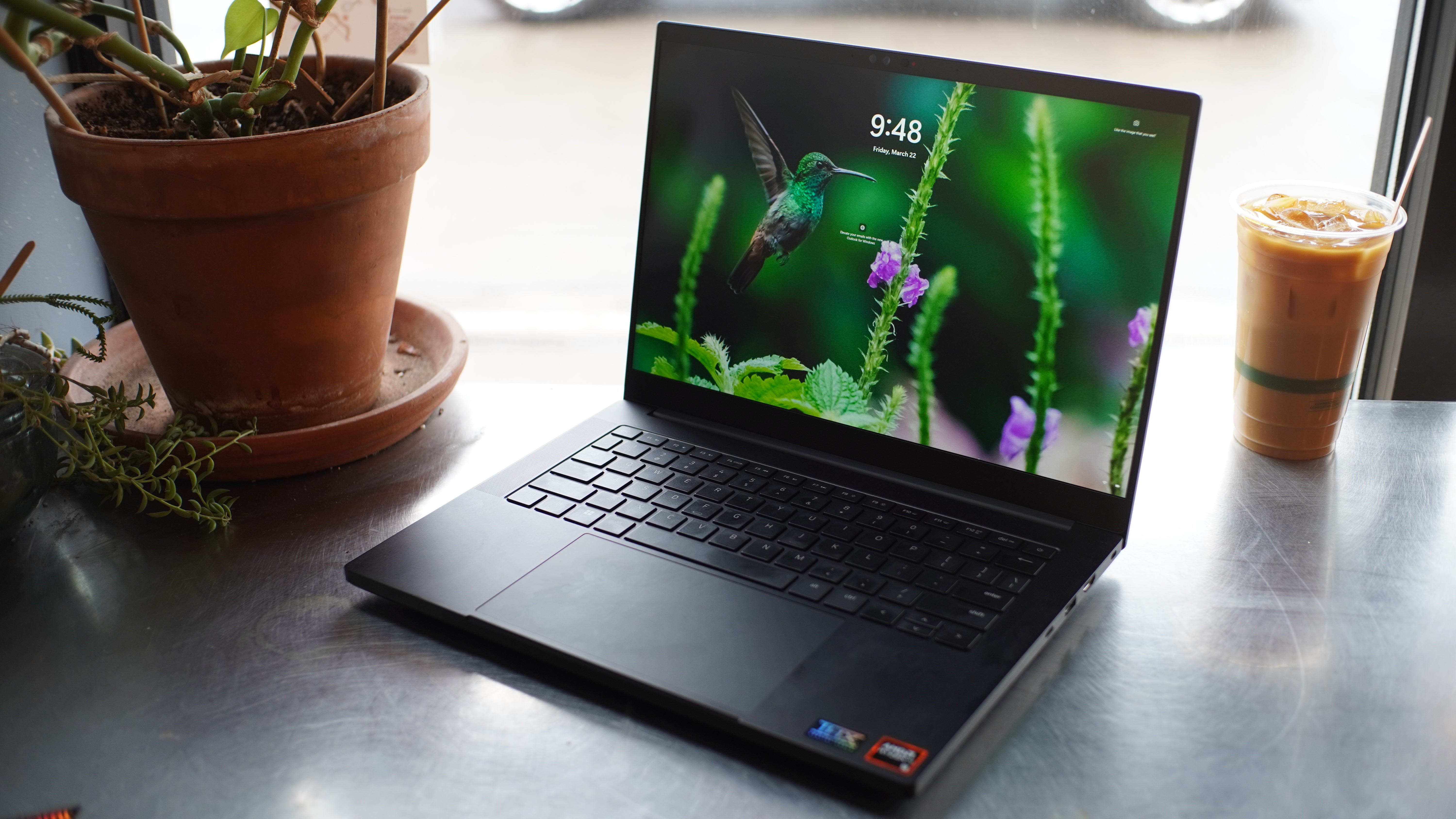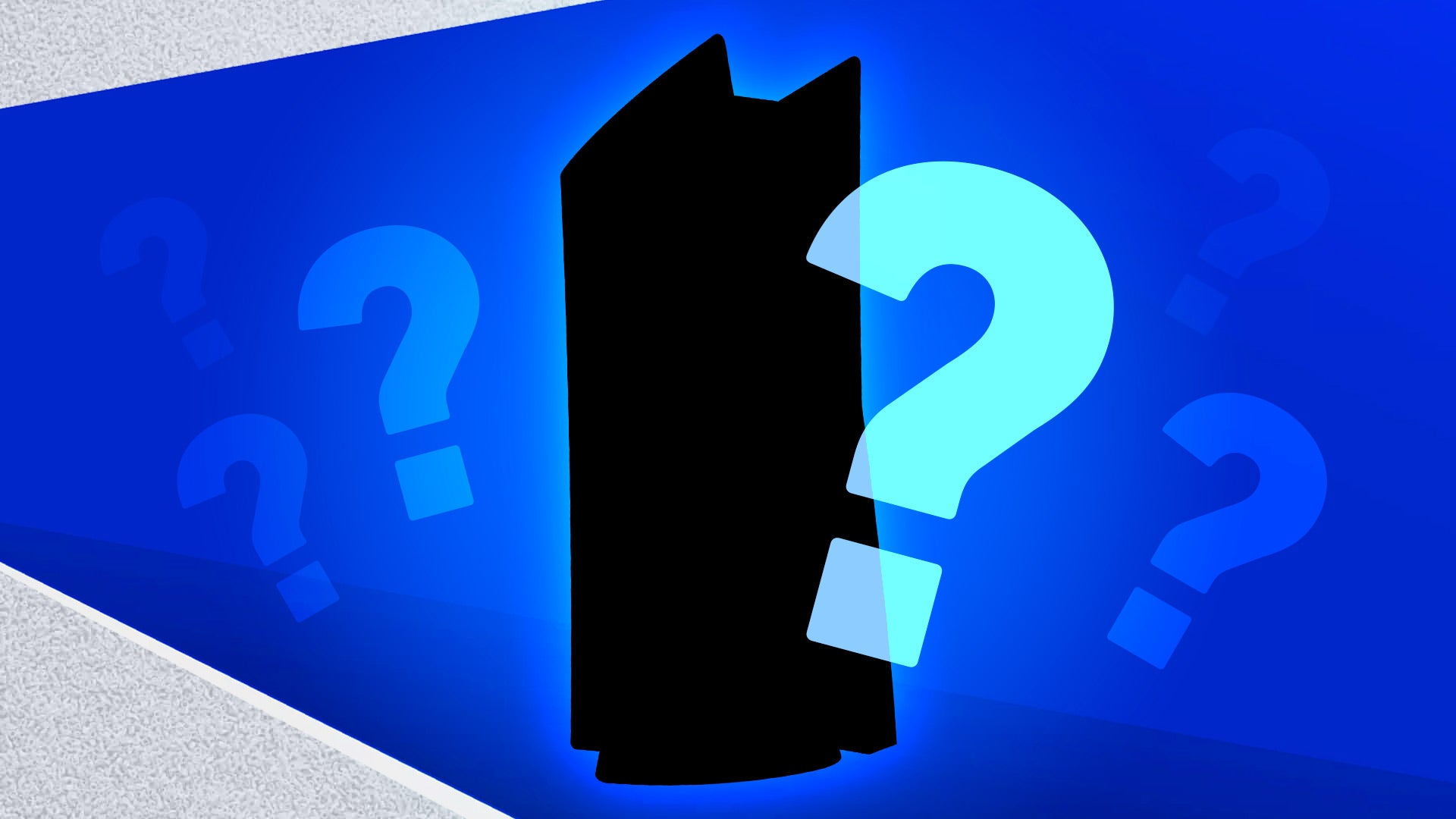The new year is well underway, and with it comes the latest refresh of Razer’s 14-inch laptop, the aptly named Razer Blade 14. This more compact model doesn’t skimp on performance hardware, packing in a potent Ryzen 9 8945HS CPU and up to an RTX 4070 mobile GPU. However those are par for the course in recent gaming laptops, so Razer sets itself apart by building it all into a system that has more in common with a MacBook than with a gaming rig. That makes for a price that also has more in common with Apple than typical Windows PCs, though, and at $2699, the model we tested is definitely on the pricey side for the hardware it packs. Here’s a deeper look at what Razer has on offer.
Razer Blade 14 – Design and Features
Bezels narrow and ports change, but if you’ve seen one Razer Blade, you’ve seen them all. With 2024’s Razer Blade 14, you’ll find a familiar design skewing heavily toward all-black everything and hardware that continues to look much like a MacBook Pro. It makes for a slim and portable laptop, even if the Blade 14 is heavier than competing ultrabooks at 4.12 pounds and even heavier than something like the larger Lenovo Legion Slim 5 14 Gen 8.
Razer’s commitment to metal is playing a role in that weight, but results in a more elegant package. My wrists wish Razer had learned anything in the 7 years since I last owned one of its laptops, because the front edge of the chassis is still just as sharp as ever, and it digs right into flesh. Aside from this issue, there’s little to complain about design-wise, though. It’s an elegant gaming laptop that hides its intent at every corner, at least until the RGB keyboard and green Razer logo on the lid light up.

While the larger Blade 16 might do interesting things with its monitor, the Blade 14 has to settle for a more modest setup. The laptop has a 14-inch panel with a 2560x1600 resolution that’s satisfyingly sharp. And with a 240Hz refresh rate, it’s a viable panel for gaming. A peak brightness of 479.7 nits and a wide color gamut (99% of DCI-P3) also make it a pleasure to look at, while a matte finish helps boost visibility even in bright conditions. But it’s still a more basic LED panel without complete HDR support and limited contrast (960:1) that keeps it from looking exceptional. And as fast as the 240Hz refresh rate is, the panel still exhibits more ghosting than a comparable OLED panel, which would also have given the Blade 14 a big boost in contrast.
Razer’s long-standing design provides an OK but unimpressive array of ports. Two USB-A and two Thunderbolt 4 ports are certainly handy, and Razer has put one on each side. Beyond that, there’s just an HDMI port, a headset jack, a power port, and a Kensington lock slot. MicroSD or even full-size SD would have been nice to see here. The power port is also a strange proprietary one, but if you’re ever caught without the main charger, the laptop can readily charge over USB-C.
While it would have been good to see more ports, it may not have been worthwhile if it came at the cost of reducing the quality of the speakers onboard here. The Razer Blade 14 has great speakers, easily among the best I’ve heard from a laptop this size. They carry a fullness that’s especially rare of a laptop, not leaving bass out in the cold. And even blasting at full volume, the system doesn’t suffer serious distortion or a grating quality. These top-firing speakers are a rare treat and almost enough to forgive the awkward way Razer shrunk a few keys on the right side of the keyboard.

The keyboard isn’t miraculous, but it’s decent. The membrane switches aren’t too squishy, and they make for snappy typing. I quickly got up to speed on the keyboard, typing comfortably between 110 and 120 words per minute with good accuracy. Small arrow keys make navigation a little nuisance though, and I encountered a repeatable hardware issue where even light touches of the Up arrow key would register, even just resting my finger on it. The keyboard has per-key RGB lighting, and with Razer Synapse, it’s easy to customize and set up color schemes linked to different games.
Razer’s trackpad is gigantic, and makes mousing around a breeze. It takes up about as much space as it possibly can, and that’s almost to its detriment. Palm rejection while typing works well, but sometimes it registers a bit of my palm as an extra while I’m swiping around and thinks I’m trying to do multi-finger gestures.

The webcam on the Razer Blade 14 isn’t great, struggling to capture much light even with strong light, so the result is a noisy image. Razer built in IR emitters for Windows Hello facial recognition though, which is a quick and convenient way to sign into the laptop.
Razer Blade 14 – Software
The Razer Blade 14 comes running Windows 11 with virtually no bloatware to speak of unless you count Razer Synapse. But since Razer Synapse is effectively an essential tool for controlling a number of hardware elements on the system, it’s welcome here. Synapse provides control over performance, battery settings, audio enhancements, and display behavior (such as GPU mode, color profile, and refresh rate).
Razer Blade 14 – Gaming and Performance
The Razer Blade 14 packs in powerful internals with an 8-core Ryzen 9 8945HS and an Nvidia GeForce RTX 4070 mobile GPU. That pairing delivers strong performance at both 1080p and higher resolution. Impressively, the tight confines of the Razer Blade and narrow ventilation haven’t held it back in the same dramatic fashion as I saw from 2023’s Razer Blade 16, which could struggle to keep up with some systems running on lower-tier parts because of how smothered its high-power components were.

At 1080p, the Razer Blade 14 easily maxes out settings and exceeds 60fps in all of our gaming benchmarks, many of which include ray tracing. In a good deal of those benchmarks, it even exceeds 100 fps. It even managed to well exceed 60fps in most of the benchmarks when run at the laptop’s native 2560x1600 resolution.
Running against another thin gaming laptop, the MSI Stealth 14 Studio, the Razer Blade 14 shows it’s making good use of its higher-tier GPU, keeping a tidy advantage overall. That said, it’s not a clear year-on-year improvement, as the 2023 Razer Blade 14 also offered an RTX 4070 and, in some cases, managed to get more out of it than the 2024 model. If you find yourself looking to get similar performance and design with a discount, last year’s model might be a good way to go.

No matter what, Razer’s design comes at a cost. On the one hand, it’s a noisy laptop with its fans whirring away. They emit a high-pitch squeal under load, and it’s not pleasant to listen to for long. But if you’re gaming, you’re going to be listening to it. The metal design also channels a good deal of heat into the chassis, so even during light workloads the system is notably warm. Thankfully, it avoids scorching temps anywhere near where my hands rest while gaming. Then there’s the monetary cost of the design. For close to the same price (but likely even less given frequent discounts), Lenovo’s Legion Pro 7i Gen 8 offered considerably more performance across the board, with the key trade offs being size, weight, and battery life.
The battery life of the 2024 Razer Blade 14 also is pretty dependent on some smart decisions. If the discrete GPU isn’t disabled, the nearly 7 hour runtime can drop to just over 3 hours of light office use. The full brightness of the display and the 240Hz refresh rate can also cut down on the battery life, as our 6:56 result was managed with the display at 50% brightness and a 60Hz refresh rate.







